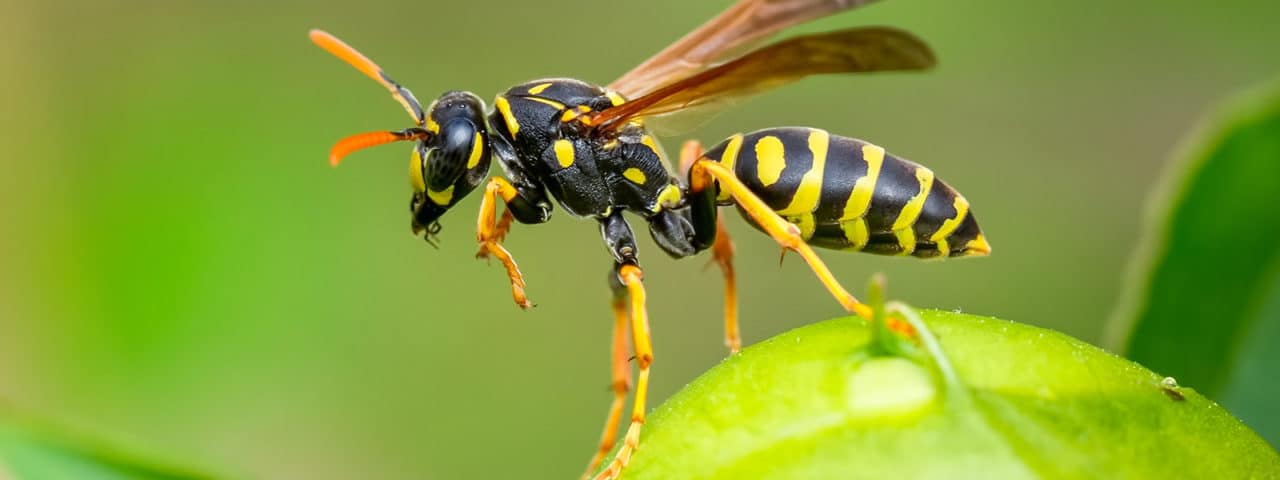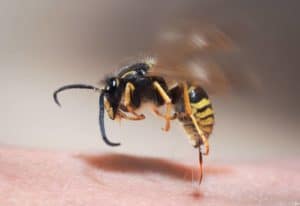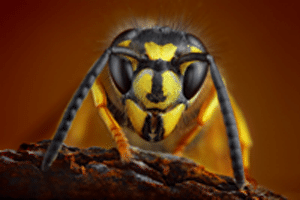Wasp Removal
A wasp infestation is nothing to take lightly. Not only do these aggressive insects leave painful stings, but in certain cases, they can cause allergic reactions and even deadly anaphylactic shocks.
To protect your comfort and your health, you must get rid of wasp nests as soon as you find them, relying on safe and systematic removal methods so that you do not get stung in the process.
Senske provides just such safe and systematic removal. Operating throughout the area, our team knows how to eliminate a wasp infestation quickly without exposing your family to stings and shocks. With our help, you and your loved ones can be safe from wasps all year long. Call today
Wasp Control — Our Process
The key to effective wasp control is to follow a clear, coordinated system. Senske has developed and perfected just such a pest control system, which involves:
- Insect Identification- At the beginning of each wasp removal job, we inspect the property to locate the nest and make sure the insects in question are in fact wasps, hornets, or yellow jackets, as well as what particular type of wasps they are. Different insects warrant different removal methods, so it’s important to know what we’re dealing with at the outset. The better we understand the problem, the easier it is to stop it and prevent it from happening again.
- Wasp Nest Removal- Once we are sure of the insects’ identities, the next step is to get their nest out of your yard as seamlessly as possible. We make sure to avoid aggravating the wasps while we are taking their nest away so that your family and our employees do not get stung in the process. By removing every nest at the earliest opportunity, we make it harder for the wasps to spread.
- Comprehensive Cleanup- With the nest gone, we move on to cleaning up any residue left by the wasps, as well as identifying items that might serve as a source of food or harborage site for these insects. This helps prevent them from coming back and starting the infestation all over again.
Besides wasp removal, we also offer a full-service pest control program, which involves inspecting your property and eliminating wasps and other insects at the first sign they are there. Through this program, you can prevent future infestations from ever getting off the ground, keeping your home and your family safe from every manner of pest.
Why Choose Senske for Wasp Removal?
With more than 75 years of experience in the pest control and removal business, Senske has seen wasp infestations of all sizes and on all types of property. This prepares us to remove these aggressive insects from your yard under any circumstances.
No matter how bad the infestation is, what the wasps are feeding on, or where they have built their nests, we should have no trouble clearing them from your property as quickly and safely as possible.
Besides our experience eliminating bees & wasps, Senske stands out for using safe, effective pest removal products. Every treatment we use for getting rid of wasps and wasp nests and keeping them away has been fully evaluated and approved by the state government, as well as by Federal authorities. You can be confident that your children and pets will not be harmed by anything we use in your yard.
Wasp Exterminator Pricing
Senske seeks to make wasp control affordable and accessible for all families. For this reason, we offer competitive pricing for all of our wasp removal services, as well as for removing bees and other insect pests.
Specific prices vary based on the size and location of the nest that we are removing, as well as what methods we have to use to get rid of it. As soon as we finish inspecting your grounds, we’ll give you a free, precise estimate of the cost of wasp control.
Do you have a bee problem? The Senske pest control team is experienced in bee removal and can safely remove a bee infestation from your property. Don’t leave your home and loved ones exposed to wasps. Contact Senske today for a free estimate on comprehensive wasp control!
Wasps Species
The term wasp is an all-encompassing name given to over 20,000 different species of stinging insects, including hornets, paper wasps and yellow jackets. Wasps are especially dangerous because they don’t die when they sting, allowing them to sting a person or an animal many times over.
Destroying or removing a wasp nest can be extremely dangerous. When a wasp feels threatened, it releases a pheromone which alerts other members of its nest to the cause of the threat. Interacting with one wasp can quickly transition into interacting with the whole nest. If wasps are becoming bothersome near your house it’s best to call a professional bee removal specialist to remove the colony.
Hornet
Hornet nests generally include less than 700 hornets. Their sting is especially painful because of a chemical called acetylcholine that they release into every person that they sting. Hornets generally live in dark places. Roof overhangs or gutters of houses are typical environments for hornet nests.
Paper Wasp
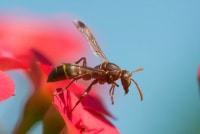
The winter season is usually when paper wasps are found inside houses. If you notice a singular paper wasp inside of your house, it is most-likely the queen wasp. Paper wasps are aggressive and will attack if threatened and their sting is painful.
Yellow Jacket
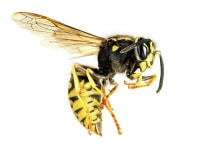
They build their nests in abandoned rodent holes or in the walls and ceilings of houses. They are defensive of their nests and they can and will sting multiple times if threatened. Yellow jackets have larger nest sizes, generally ranging between 1,500 to 15,000 members.
Wasp Activity
Bees and wasps are most active in late summer and early fall. The easiest way to remove bees or wasps is if you can catch them in the springtime before they signal for their entire colony to follow them to your property. It’s much easier to remove 100 bees than 45,000! Remember, when dealing with wasps and bees, it’s better to be safe than sorry.
Help protect your home and your family from stinging insects. Contact Senske Pest Control today at or for bee removal.
Wasps: A Stinging Problem
Few things can cause a group of friends enjoying a meal to disperse in a panic than the appearance of wasps. These sugar-loving insects strike fear in even the strongest among us due to their ability to organize a group attack and to sting repeatedly when threatened.
Although people mostly associate the word “wasps” with black-and-yellow insects that build hives on the sides of buildings, under eaves, and under decks, there are actually 20,000 different identified species of wasps.
Colony or Solitary Wasps?
Wasps are broken down into two main categories: colony and solitary.
Solitary wasps will normally avoid humans and do not create hives that most associate with colony wasps.
Colony wasps, including Yellow Jackets and Hornets, are more aggressive and the wasps that most people recognize. Colony wasps create a new colony every spring with a fertilized queen who is the only member of the colony who lives dormant through the winter.
Wasp Life
Most wasps, when kept away from homes and in small numbers, are a benefit to your yard. Wasps hunt other insects that can damage yards to feed their young larvae. Wasps also help to pollinate growing plants in the spring. Only the young larvae feed on dead insects while adult wasps prefer the sugary sweets available in sodas and other sweets found on your picnic table.
Dealing with wasps can be particularly difficult because colony wasps have the ability to coordinate an attack through a pheromone that is released when they are in danger. This pheromone lets other wasps know that there is danger in the area and calls them into battle.
How to Prevent a Wasp Infestation
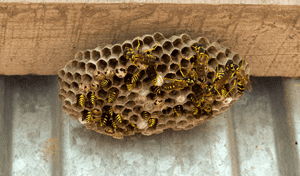
It’s important to take extra care when dealing with wasps near their nest, because they can release a pheromone to signal danger if one is killed close to the nest and trigger an attack.
The best time of year to deal with wasps is either in the winter by removing old nests, making it harder for wasps to move back in during the summer, or in early April when the queen has started building a colony but not yet grown it to large numbers.
Also, because wasps are drawn to flower pollen and nectar, it is a good idea to move flowers away from houses. There are also species of wasps that like to burrow in the ground for their nests. They prefer dry and loose dirt in the ground that is easy to burrow in.
Senske’s Wasp Control Services
Because of their ability to coordinate an organized attack and in conjunction with their ability to sting multiple times, we recommend not to take on a full-blown wasp infestation by yourself. In most cases it is safer to allow a trained pest control professional to deal with wasp problems.
Wasps can stay angry for days after their nest is disturbed and continue to be a danger to families, so it’s important to make sure that the job is done right the first time. The professionals at Senske Pest Control have experience dealing with wasps and the equipment to take care of your wasp problem professionally and quickly.
Wasp Control Near Me
For wasp pest control, contact us at (877) 944-4007 or request an estimate online.

